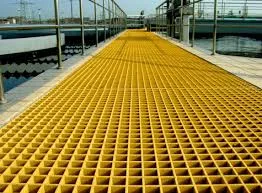
-
 Afrikaans
Afrikaans -
 Albanian
Albanian -
 Amharic
Amharic -
 Arabic
Arabic -
 Armenian
Armenian -
 Azerbaijani
Azerbaijani -
 Basque
Basque -
 Belarusian
Belarusian -
 Bengali
Bengali -
 Bosnian
Bosnian -
 Bulgarian
Bulgarian -
 Catalan
Catalan -
 Cebuano
Cebuano -
 China
China -
 China (Taiwan)
China (Taiwan) -
 Corsican
Corsican -
 Croatian
Croatian -
 Czech
Czech -
 Danish
Danish -
 Dutch
Dutch -
 English
English -
 Esperanto
Esperanto -
 Estonian
Estonian -
 Finnish
Finnish -
 French
French -
 Frisian
Frisian -
 Galician
Galician -
 Georgian
Georgian -
 German
German -
 Greek
Greek -
 Gujarati
Gujarati -
 Haitian Creole
Haitian Creole -
 hausa
hausa -
 hawaiian
hawaiian -
 Hebrew
Hebrew -
 Hindi
Hindi -
 Miao
Miao -
 Hungarian
Hungarian -
 Icelandic
Icelandic -
 igbo
igbo -
 Indonesian
Indonesian -
 irish
irish -
 Italian
Italian -
 Japanese
Japanese -
 Javanese
Javanese -
 Kannada
Kannada -
 kazakh
kazakh -
 Khmer
Khmer -
 Rwandese
Rwandese -
 Korean
Korean -
 Kurdish
Kurdish -
 Kyrgyz
Kyrgyz -
 Lao
Lao -
 Latin
Latin -
 Latvian
Latvian -
 Lithuanian
Lithuanian -
 Luxembourgish
Luxembourgish -
 Macedonian
Macedonian -
 Malgashi
Malgashi -
 Malay
Malay -
 Malayalam
Malayalam -
 Maltese
Maltese -
 Maori
Maori -
 Marathi
Marathi -
 Mongolian
Mongolian -
 Myanmar
Myanmar -
 Nepali
Nepali -
 Norwegian
Norwegian -
 Norwegian
Norwegian -
 Occitan
Occitan -
 Pashto
Pashto -
 Persian
Persian -
 Polish
Polish -
 Portuguese
Portuguese -
 Punjabi
Punjabi -
 Romanian
Romanian -
 Russian
Russian -
 Samoan
Samoan -
 Scottish Gaelic
Scottish Gaelic -
 Serbian
Serbian -
 Sesotho
Sesotho -
 Shona
Shona -
 Sindhi
Sindhi -
 Sinhala
Sinhala -
 Slovak
Slovak -
 Slovenian
Slovenian -
 Somali
Somali -
 Spanish
Spanish -
 Sundanese
Sundanese -
 Swahili
Swahili -
 Swedish
Swedish -
 Tagalog
Tagalog -
 Tajik
Tajik -
 Tamil
Tamil -
 Tatar
Tatar -
 Telugu
Telugu -
 Thai
Thai -
 Turkish
Turkish -
 Turkmen
Turkmen -
 Ukrainian
Ukrainian -
 Urdu
Urdu -
 Uighur
Uighur -
 Uzbek
Uzbek -
 Vietnamese
Vietnamese -
 Welsh
Welsh -
 Bantu
Bantu -
 Yiddish
Yiddish -
 Yoruba
Yoruba -
 Zulu
Zulu
Exploring the Benefits and Applications of FRP Sheets in Modern Construction
Exploring FRP Sheets A Modern Solution for Various Applications
Fiber Reinforced Plastic (FRP) sheets have gained significant traction in various industries due to their exceptional properties and versatile applications. These composite materials, made by combining plastic with reinforcing fibers, offer unique advantages that make them a preferred choice for many construction and manufacturing needs. In this article, we will explore what FRP sheets are, their benefits, applications, and why they represent a modern solution in today's material landscape.
What Are FRP Sheets?
FRP sheets are composite materials formed by embedding fibers—often glass, carbon, or aramid—into a polymer resin. This process results in a lightweight, high-strength sheet that is both durable and resistant to various environmental factors. The most commonly used resins include epoxy, polyester, and vinyl ester, each providing different characteristics suitable for specific applications.
Benefits of FRP Sheets
The popularity of FRP sheets is largely attributed to their numerous benefits
1. Strength and Durability FRP sheets exhibit high tensile strength, making them ideal for applications requiring robust materials. They are resistant to impact, corrosion, and UV radiation, ensuring a long lifespan even in harsh environments.
2. Lightweight Compared to traditional materials like metal or concrete, FRP sheets are significantly lighter. This advantage simplifies installation and reduces transportation costs, making them an economical choice.
3. Versatility FRP sheets can be manufactured in various thicknesses, colors, and finishes, allowing for a wide range of aesthetic and functional applications. They can be molded into complex shapes to meet specific design requirements.
4. Low Maintenance The non-porous surface of FRP sheets prevents the absorption of water and contaminants, significantly reducing maintenance needs. A simple cleaning regimen is often all that is required to keep them in good condition.
frp sheet

5. Eco-Friendly Options Many FRP manufacturers are now focusing on sustainable practices, producing sheets from recycled materials or bio-based resins, thus contributing to environmental conservation efforts.
Applications of FRP Sheets
FRP sheets are increasingly utilized across various industries due to their innovative properties
1. Construction In the construction industry, FRP sheets are used for facades, roofing, and structural reinforcement. They provide an excellent alternative to traditional building materials, enhancing both aesthetics and functionality.
2. Automotive The automotive sector uses FRP sheets in paneling and internal structures to reduce weight and improve fuel efficiency without compromising safety.
3. Marine In marine applications, FRP sheets are prevalent due to their resistance to saltwater corrosion. They are used in boat hulls, decking, and other components that require durability in a challenging environment.
4. Electrical FRP sheets are often used in electrical applications due to their insulating properties. They serve as protective barriers and enclosures in high-voltage environments.
5. Agriculture In agriculture, FRP sheets are used in greenhouses and equipment covers. Their lightweight and durable nature help in enhancing productivity while ensuring the longevity of agricultural structures.
Conclusion
As industries continue to seek materials that offer a combination of strength, lightweight characteristics, and durability, FRP sheets emerge as a leading solution. Their versatility and range of applications make them a valuable asset across various sectors. Furthermore, with ongoing advancements in technology and sustainability, the future of FRP sheets looks promising, paving the way for innovation and efficiency in material usage. Overall, embracing FRP sheets may very well be a step towards a more durable and sustainable future.









